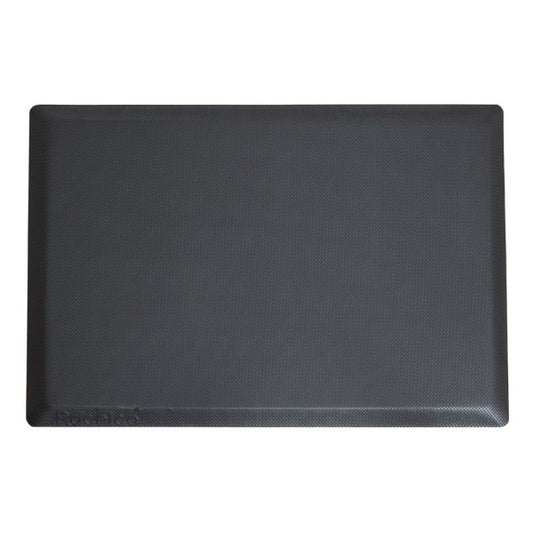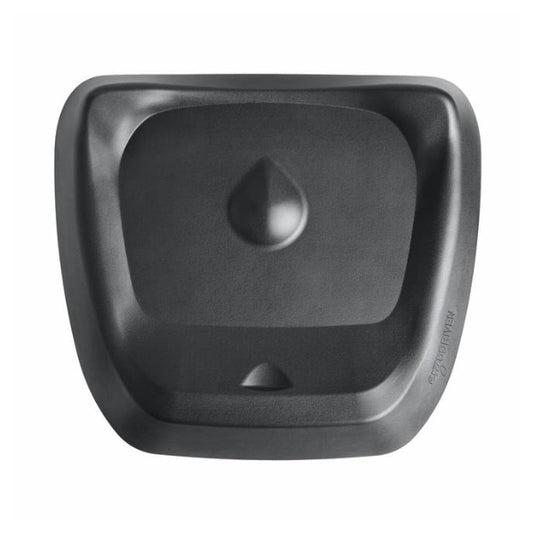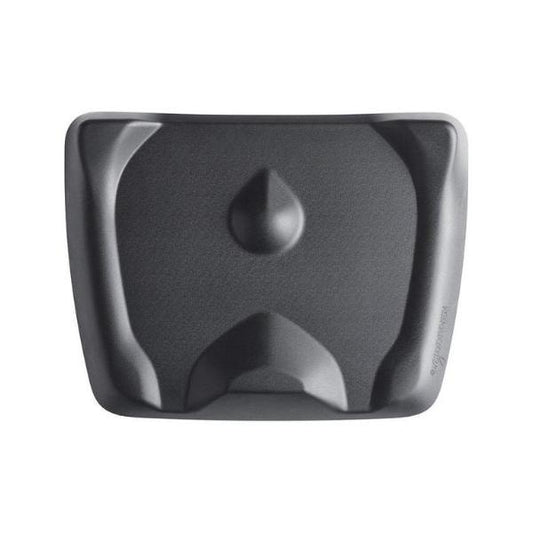Collection: Standing Desk Mats
Anti Fatigue Mats for a Standing Desk
It's amazing what a half inch of padding can do!
Of all the accessories you might consider purchasing with your standing desk, none of them are more important than a quality standing desk mat.
Some may also refer to these as an "anti-fatigue mat" or a "standing mat" - but they all mean the same thing. A standing desk mat is simple pad designed to create cushion between your feet and the floor. They're usually made of polyurethane or vinyl rubber (hint: poly is better), and they're usually about 3/4" thick.
But what exactly do these anti fatigue mats do? Do you need one? And which one should you buy?
On this page, we're going to answer each of these questions for you, offer some advice about how long you should stand on one, and hopefully help make your standing desk experience a comfortable one.

Do You Need a Standing Desk Mat?
YES. It might sound like a trivial detail, but if you're going to be spending hours of your day standing, you'll need something to help protect your body from the impact. And this is especially important for those of you using your desk on hard floors.
A quality standing mat will help alleviate pressure from your knees and joints, reduce the impact on your spine, avoid developing pressure points on your feet, and can help encourage you to move a bit more throughout your day.
This is why an anti-fatigue mat is our #1 recommendation when purchasing a standing desk.
The Best Standing Desk Mats (2021 Update)
#1 - Topo Mat by Ergodriven
The Topo is our top rated standing desk mat, because it's made of very high-quality material for cushioning, and offers a unique design that encourages you to move and stretch throughout the day.
With strategically placed high points on the back, sides and middle of the mat, the Topo keeps you active without even realizing it. And you could make a strong case that movement is more important for your body than the cushioning. When you're moving, your body can better maintain its circulation, and you can't help be in good posture (one of the reasons that treadmill desk users often report less fatigue than standing desk users).
The Topo Mat will have you stretching, massaging and rocking your way to more comfort and better health.

#2 - Sit-Stand Smart Mat
The Sit Stand Smartmat is made of similar high-quality materials as the Topo, but also offers it's own unique feature: a special under-surface that slides easily across your floor - so you can easily move it into place, and out of the way when you sit - but then gets sticky when you stand on it (we don't want any slips or falls, after all)
This is a simple problem to over-look when you haven't had much experience using a standing desk, but the fact is that most standing desk users switch between sitting and standing on a fairly regular basis. The last think you want to do is bend over and lift your mat out of the way and then back again. With the Smart Mat, all it takes is a gentle push with your foot.
We also appreciate that the Smart Mat has a little bit better styling - so if you're planning to use this in a commercial office space, the Sit Stand Smart Mat might be better.

How long should you stand at a standing desk?
Keep it simple, and let your body be your guide.
Start standing, and sit when your body feels tired. Then stand up again when you're ready. It's really as simple as that.
Don't over-think it, and don't push yourself beyond what your body is ready for. Over time, your body will adapt to standing, and you'll find yourself naturally standing for longer periods of time. Remember: it's not a competition.
Do a little searching around, and you can find all kinds of unique protocols for when to stand and how long - but the truth is that they often over-complicate something that should be pretty easy. For example, one very famous protocol says you should work in 30 minute cycles: sit for 20 minutes, stand for 8 minutes, then walk for 2. One has to ask themself - has this person ever held a real job? Nobody can sustain something like that, and still get their work done.
To recap:
-
Start standing
Try to start each day - or each work session - in the standing position.
-
Sit when your body feels tired
Most people feel this in their knees first, but some might feel it in your back or feet. Pay attention to the sensations in your body, and let it guide you.
-
Use natural breaks to start standing again
Lunch, meetings, coffee, bathroom - use these simple events as triggers to remind you to stand again (if your body feels ready)
-
Don't judge yourself
Feeling a little tired one day? Then just sit. Remember that it's a marathon - not a sprint. You're still winning.
... And we strongly recommend purchasing an anti-fatigue standing desk mat to make the whole experience more comfortable.
For more ideas about about which accessories you should consider purchasing with your standing desk, we recommend visiting our Standing Desk Accessories page.
-
Ergodriven Topo Mat Standing Desk Anti Fatigue Mat
Regular price $ 99.00 USDRegular price -
Ergodriven Topo Mini Standing Desk Anti Fatigue Mat
Regular price $ 79.00 USDRegular price -
 Sold out
Sold outSit-Stand SmartMat
Regular price $ 129.00 USDRegular price -
iMovR Ecolast Hybrid Standing Desk Chair Mat
Regular price From $ 269.95 USDRegular price -
 Sold out
Sold outFlexispot Wellness Mat
Regular price From $ 79.00 USDRegular price$ 129.00 USDSale price From $ 79.00 USDSold out -
 Sold out
Sold outRocelco MAFM Anti-Fatigue Mat
Regular price $ 79.00 USDRegular price$ 99.00 USDSale price $ 79.00 USDSold out -
 Sold out
Sold outApexDesk Anti-Fatigue Standing Mat
Regular price $ 69.00 USDRegular price







